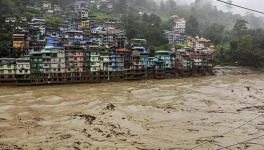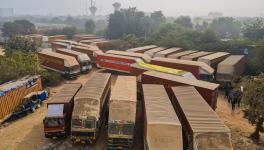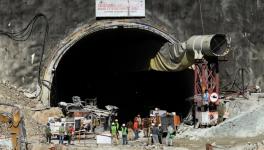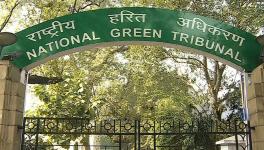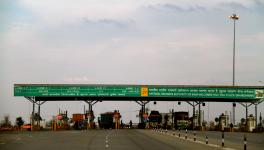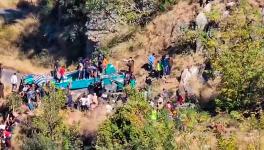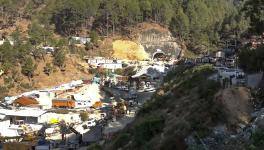India’s Development Plans: Incorrect Priorities, Distorted Ideas
Sinking Joshimath is a stark instance of ecological ruin resulting from unplanned construction. While the government has been publicising its performance, especially in the road sector, by presenting selective information and data, disturbing questions are also rising. These are of two kinds—one, why is funding rising, but the quality of roads apparently declining? Two—why is road safety not taken seriously, including experts’ warnings about risks from construction in hilly areas?
Let us begin with the case of funding, which is at the heart of any infrastructure activity like roads. In India, as the budget outlay for highways has increased, the outcome in terms of highways constructed and widened has stagnated. In 2020-21, India built or expanded 13,327 kilometres of highways, which fell significantly to 10,457 km the following year. That’s lower than the progress in 2018-19.
See this fall in performance in the context of the significant budget hikes. Expenditure in 2020-21 for the National Highways Authority of India was Rs 46,062 crore. The revised budget was Rs 65,686 crore the following year, a 30% jump. So, the more the government spent, the less it achieved. Meanwhile, instead of asking the government to explain this odd phenomenon, the media presented people with accounts of outstanding performance throughout this phase.
Secondly, quantitative achievement is just one aspect of road development. What about the quality of work? Reports of roads sinking or breaking apart, even in the plans, especially during last year’s rainy spells, revealed the poor quality of construction. Most such reports of collapses or the appearance of sinkholes were from the Himalayan states, where quality matters the most for commuter safety, and from a defence point of view. In Joshimath, we see how careless construction work and excessive tree-felling have created new landslide zones and aggravated existing ones. This has created havoc in villages, increased traffic hold-ups, and pushed up the chances of accidents and risks from falling boulders.
The careless deposition of rubble has buried or exposed natural underground water springs in Uttarakhand’s higher reaches. Unfortunately, the death and injury of construction workers in accidents due to inadequate safety measures also get ignored.
Therefore, what we see unfold in Joshimath may increase—is perhaps increasing already, as similar reports arrive from Karnprayag, a few hours’ drive away. It is because the Union Ministry of Environment, Forest and Climate Change, in a notification dated 14 July 2022, exempted highways in border areas from prior environmental clearance. Highway developers in the border areas will only have to ensure self-compliance to a Standard Operating Procedure notified by the Union government from time to time.
Generally, a government agency needs a hiked budget when it wants to take up more work. But in the strange case of the NHAI, the most significant budget increases have been accompanied by growing reliance on the private sector to fund highway and infrastructure projects. In the budget announced in 2022, the NHAI got one of its most generous hikes in recent times—a dream budget few government agencies would dream of! The 30% hike in the budget for 2021-22 (to Rs 65,686 crore) more than doubled in Budget 2022-23, to Rs 1,34,015 crore.
Yet, in the middle of last year, the NHAI decided to change its funding and contracting model and return to the Build-Operate-Transfer or BoT (toll) model. The Indian Express newspaper reported last July, “After funding highway projects through public money for a better part of the last decade, the NHAI is set to return to funding through private investments and plans to offer at least two highway upgradation projects to private players using the build-operate-transfer (BoT) model during the current quarter.” The same report says the BoT model accounted for 96% of all projects awarded in 2011-12, which reduced to zero over time.
Several problems arise from this shift back to the BoT model. Why is the NHAI keen to return to a model that failed to last? Secondly, are public funds falling short for highways? If the Union Ministry of Road Transport and Highways is flush with funds, as recent allocations indicate, why is the Centre not spending more on improving rural roads and road safety, which perennially need financial support?
In February 2020, a report from Shakti village in the Kullu district of Himachal Pradesh said that an unwell woman had to be carried on a chair over 20 kilometres amid heavy rainfall to reach the nearest road where an ambulance could take her to a hospital. It was not an isolated incident. In December 2022 came another report that a health team had to walk 20 km to the same Shakti and its neighbouring village to treat around two dozen children suffering from a viral outbreak. Images of seriously ill patients being carried on cots or chairs or by other devices over long distances before they can reach a motorable road are by no means rare.
Yet the budget for 2022-23 for the once highly-publicised Pradhan Mantri Gramin Sadak Yojana (PMGSY) administered by the Ministry of Rural Development is only Rs 19,000 crore. Over half a million villages get less than 15% of what the NHAI has. Isn’t it time for a better allocation proportion for the rural road sector? The allocations are skewed within the Union Ministry for Road Transport and Highways. Research, training and safety get only Rs 356 crore in the 2022-23 budget—0.3% of the allocation for NHAI, in a country with the highest mortality rate from traffic accidents.
During the previous year (2021-22), despite a resource constraint, the allocation for the NHAI increased by over Rs 8,000 crore in the revised estimates. But research, training and safety were cut by about a third, to Rs 228 crore. It is strange that Rs 8,000 crore had to be squeezed out of a paltry Rs 128 crore meant to save lives.
We can also be sure that the road transport sector needs more careful monitoring from the public. After Joshimath, the media must especially hold its accolades when next year’s budget announcements roll around.
The writer is the honorary convener of the Campaign to Save Earth Now. His recent books include a Day in 2071, Planet in Peril and Man Over Machine. The views are personal.
Get the latest reports & analysis with people's perspective on Protests, movements & deep analytical videos, discussions of the current affairs in your Telegram app. Subscribe to NewsClick's Telegram channel & get Real-Time updates on stories, as they get published on our website.









